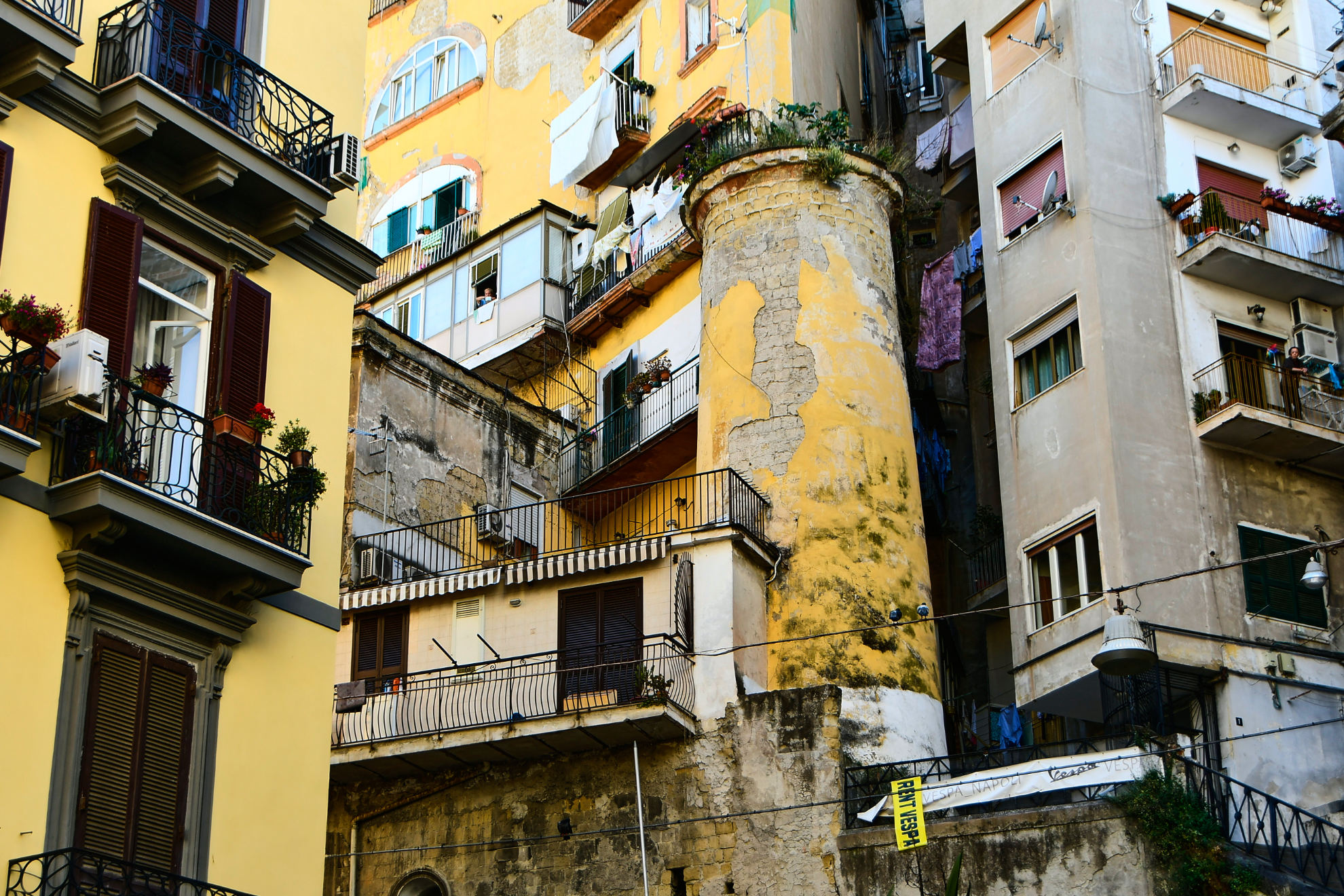A network of narrow alleys in the oldest part of Naples, the Palepoli (old town) built by the ancient Greeks overlooks the sea, framed by Borgo Marinari, Castel dell’Ovo and via Caracciolo. Behind one of the most well-known points of the city is hidden what once was the fishermen's district. Saint Lucia, this is the name, has been narrated, sung and painted between the 1700s and the late 1800s.
Ph. Cristina Russo - Trentaremi

Let's try to imagine this dense intersection of paths: those that make up the "alleys theater" in Naples, as the writer Giuseppe Marotta would say. From one of these, historically called Pallonetto, you go down to the main street of the neighborhood. Via Santa Lucia today seems distant from the rest of the city, separated as it is from the Partenope which extends beyond the large hemicycle of Piazza del Plebiscito. Yet it is from here that Naples takes its forms. In the oysters' stalls, the fresh fish vendors who crowded the streets; in the shouts of the dippers, who attracted the attention of the people to sell the zuffregna water (water with an iron flavor): ferrous, sparkling, savory, which was born from the sources of the area, called Chiatamone.
Ph. Cristina Russo - Trentaremi

Ph. Cristina Russo - Trentaremi

Santa Lucia was the seaside village par excellence. The Pallonetto road still proves it today. Going down the twisted stairs of the neighborhood, and leaving behind the narrow alleys and the promiscuity of the bassi (houses on the street), the gaze opens up along the grandeur of a building that looks like a fort. A 16th century basement, from which a masonry tower rises, today incorporated in a residential building. «That's a lighthouse there», a smiling middle-aged man indicates. Portrayed on canvases and lithographs until the 19th century, the fishermen's Saint Lucia overlooked the sea directly.
“Santa Lucia! Tu tiene sulo ‘nu poco ‘e mare ma, cchiù luntana staje, cchiù bella pare!”
“Saint Lucia! You only have a little sea but the further away you are, the more beautiful you look!”E. A. Mario
The water lapped the contours of the current main street of the neighborhood, today surrounded by the Liberty buildings of the early 1900s. Here the oysters sellers installed their wooden stalls; here the mussel sellers collected whole rows along the profile of the rocks; here the street vendors, with their carts equipped with wheels, sold octopus broth, catch of the day, or that zuffregna water of Chiatamone. Not far away, above and below the surface of the sea, rakes and divers dedicated themselves to fishing: the first from their skiffs; the latter by diving in apnea.
Ph. Cristina Russo - Trentaremi

Walking through the village of Santa Lucia in the nineteenth century meant this: immersing yourself in a lively district, among the eyes and voices of those who appeared on the balconies or went down the stairs. The history of Naples has thus remained stratified in the often radical evolutions that the neighborhood has undergone. The same via Santa Lucia was commissioned, in the 1600s, by Viceroy Pedro di Toledo in the place of what was previously a beach; the nineteenth century finally changed the layout of the neighborhood: a flow of land and concrete made the coast line move back, making Santa Lucia a “closed” village, without overlooking the sea.
Ph. Cristina Russo - Trentaremi

Today it is fascinating to get lost in the village to look for the symbols and traces of that past. In the remains of a lighthouse, in the profile of a church, in the arched form of some windows that open onto the facades of popular buildings, ancient fishermen's houses. Saint Lucia keeps her soul dormant, but does not deny it. Its relationship with the sea, although denied by the urban transformations of the 19th century, remains symbiotic. It is no coincidence that Francesco Caracciolo, a Neapolitan admiral of whom the historian Pietro Colletta recalls the “magnificent navigation”, is buried within the walls of Santa Maria della Catena.
Ph. Cristina Russo - Trentaremi

Naples was born here, transforms itself, adapts to the centuries and dominations that have passed through it. Santa Lucia, in this sense, is a perfect symbol of the city from which it seems almost distant. On the one hand, popular Naples spreads chaotic and compressed in the alleyways; on the other, open towards the open sea, you find the Naples of large hotels, tourist piers, Castel dell'Ovo and Borgo Marinari overlooking Capo Posillipo in the west and Vesuvius in the east. A hug that brings the city back to its origins , revealing its essence full of contradictions. Along these streets, with a closer look, the more careful walker will find the signs of a village with a discreet charm.

